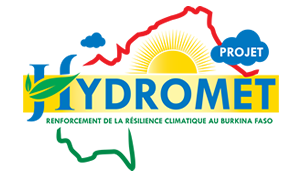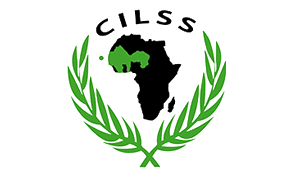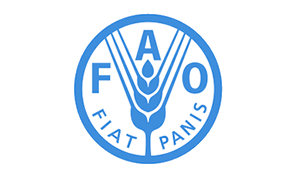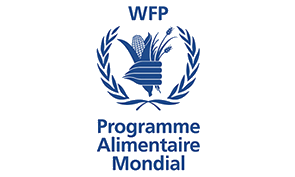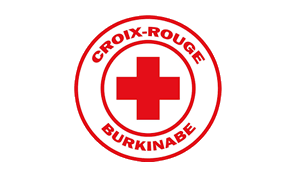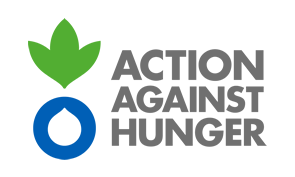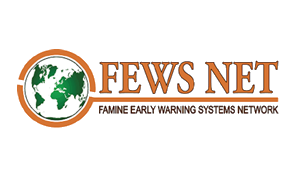Analysis of the livestock-meat sector in Burkina Faso
Located in West Africa, Burkina Faso is a landlocked country covering an area of approximately 274,000 km2. It is bounded to the north and west by Mali, to the east by Niger, to the south by the Ivory Coast, Ghana, Togo and Benin. The subtropical climate corresponds to that of a transition zone between the Sahel in the north (average rainfall of 350 mm per year) and the Sudanese region in the south (average rainfall of 1,000 to 1,200 mm per year). It is characterized by a rainy season of four to five months (May-September) which corresponds to the period of agro-pastoral production and a dry season of seven to eight months (October-April).
The irregularity of rainfall is a major constraint on agricultural and pastoral production. Burkina Faso has large agricultural areas of around 9 million hectares (or one third of the country), of which 3.5 to 4 million hectares are actually cultivated. Pastoral areas represent 47% of the total area of the country and forests occupy 17%.
With a growth rate of 2.37%, the population of Burkina Faso was estimated in 2006 at around 14 million inhabitants (RGPH 2006). For a large part of this population, poverty is a daily reality: more than 46% of the total population lives below the poverty line. In rural areas, the incidence of poverty is over 52% (compared to 20% in urban areas).
The primary sector (agriculture, livestock, fishing, wildlife and forests) is the main source of income and employment in rural areas. It employs more than 70% of the working population, represents nearly 40% of the GDP over the period 1998-2003 and contributes around 80% to export earnings. Livestock is the second largest primary sector activity in Burkina Faso after agriculture. It employs around 80% of the total population and contributes more than 12% to the formation of national added value. Livestock products rank second in exports after cotton with a contribution of 15 to 20% to export earnings over the period 1997-2003, ie a value of between 25 and 35 billion CFA francs / year. The present study focuses on the animal species of cattle, sheep and goats.
The quantity of meat exported increased from 23,219 tonnes of meat equivalent in 1994 to 46,680 tonnes in 1998. The national herd was estimated in 2005 at 7,607,000 cattle, 7,110,000 sheep and 10,640,000 goats. Annual growth rates are estimated at 2% for cattle and 3% for sheep and goats. The main characteristics of the livestock sector are its low productivity and the dominance of the extensive farming method. The average carcass weight is 110 kg for cattle, 9 kg for sheep and 8 kg for goats. Milk production averages 110 liters per 180-day lactation per cow. These performances remain below the potentialities and possibilities for improvement: 150 kg per head of cattle, 15 kg per head of sheep and 12 kg per head of goat, and 1400 liters per lactation of 280 days per cow. Imports of dairy products absorb around CFAF 9 billion in foreign exchange per year; which appears paradoxical for a breeding country in the eyes of many observers.
Therefore, adequate development policies are necessary in order to take advantage of the productive opportunities of this breeding. This implies that the executives responsible for the analysis of sectoral policies master the analytical approaches on the one hand and on the other hand, that the farmers’ organizations better understand the socioeconomic implications of national policies in matters of development of this livestock.
This study, which focuses on the analysis of the livestock-meat sector and placed under the auspices of FAO, constitutes an exercise within the framework of strengthening the analytical capacities of representatives of the ministries responsible for rural development and of organizations. peasant women. The executives and representatives of the following structures took part in this session:
Ministry of Animal Resources:
- Madame VOKOUMA / TAPSOBA Edith, General Directorate of Pastoral Areas and Developments (DGEAP),
- Doctor OUEDRAOGO Maurice, General Directorate of Veterinary Services (DGSV),
- Doctor KABORE Blaise, Directorate General of Animal Productions (DGPA),
- Mr. SAWADOGO Thomas, Directorate General of Animal Productions (DGPA),
- Mr. ZONGO Paul, Department of Studies and Planning (DEP),
- Mr. MILLOGO Antoine, Directorate General of Forecasting and Livestock Statistics (DGPSE);
Ministry of Agriculture, Hydraulics and Fisheries Resources:
- Mr. OUEDRAOGO Michel, Support Project for Agro-Sylvo-Pastoral Sectors (PAFASP),
- Mr. ZONGO Lamoussa, PAFASP;
Farmer organizations:
- Mr. OUEDRAOGO Martin, CRA du Sahel,
- Mr. TRAORE Drissa, CRA of the North Center,
- Mr. NACANABO Gombogo, CRA du Nord,
- Mr. THIOMBIANO Jean Paul, Eastern CRA.
The overall methodological approach was based on documentary research, interviews with professionals in the sector and periodic meetings of the working group. In addition, two training workshops allowed the executives concerned to familiarize themselves with different notions of sector analysis. Thus all the calculations relating to the financial and economic analyzes were carried out with the CCA software developed by the FAO agricultural policy support service.
In terms of documentation, the working group drew a lot of inspiration from the work of the “Livestock, Poverty and Growth” Initiative (IEPC) led by the Government of Burkina Faso with the support of the World Bank and the Center d FAO investment in 2003.
The periodic meetings allowed the members of the group to meet regularly to agree on the elements of the bibliographic research and analyzes. Throughout this work, the working group benefited from the support of the technical support team (EST) of the Policy Analysis Unit of the Directorate of Agricultural Statistics / DGPSA:
- Mr. HEBIE Mamadou,
- Mr. PALE Remy and
- Mr. NABYOURE Serge.
During the two training workshops, the group benefited from the support of representatives of the technical division of the project based in Rome (Italy), in particular:
- Mr. Lorenzo Giovanni BELLU and
- Miss Nathalie GUILBERT.
The facilitation of the entire training process was provided by Mr. Moussa KABORE, Director of Agricultural Statistics and Mr. Mahama ZOUNGRANA, Director General of Agricultural Forecasts and Statistics (DGPSA).
This report provides the substance of this exercise from which the trainees will benefit greatly. It revolves around five axes:
- Context of the sector,
- Functional analysis,
- Financial analysis (basic situation),
- Simulation of the policy measure,
- Economic analysis of the sector
